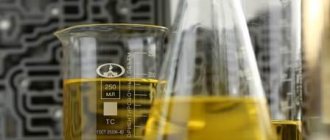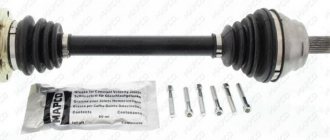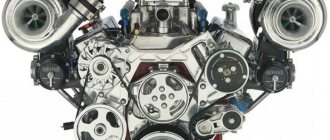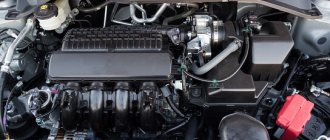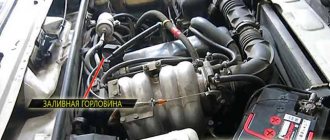Surely everyone knows what an engine is in a car.
but today’s article is devoted to a specific unit, about which we will try to tell from “A” to “Z.” The end of the last century and the beginning of a new one became a period of heightened interest in MPI gasoline engines. The decoding of this abbreviation sounds like Multi Point Injection. The extraordinary fuel injection scheme created a good demand for cars with such engines. This scheme was created according to the multipoint principle.
Due to separate injectors in each cylinder, the distribution of fuel in the cylinders is as uniform as possible. This design development, namely the release of engines with multipoint injection, was undertaken by Volkswagen. Due to which MPI engines subsequently appeared.
The emergence of such power plants provided an alternative to carburetor engines. To more accurately understand the MPI engine, you need to carefully analyze its competitive features.
History of appearance
We all remember carburetor engines. They were equipped with all domestic cars and foreign cars until the 80s. It was necessary to supply fuel in a certain proportion so that it mixes with air, forming a stoichiometric mixture.
This is a mixture in which certain proportions of oxidizer (air) and fuel are selected for complete and efficient combustion of the fuel. Any violation in the ratio of the two components of the mixture led to improper combustion of gasoline, uneven engine operation and increased emissions of harmful substances into the atmosphere.
Remember how difficult it was to achieve the exact air-fuel mixture ratio in the carburetor? Especially in old, worn-out cars. Car enthusiasts had to adjust the carburetor by ear using the “quantity” and “quality” screws for proper engine operation.
With the tightening of environmental standards, the carburetor was replaced by “mono-injection”. In fact, this is the predecessor of MPI - distributed injection. Instead of a carburetor, one nozzle was installed, which was responsible for injecting gasoline into the intake manifold. The computer was responsible for the quality of the mixture; the car owner did not need to configure it himself; this was done by the engine ECU.
By introducing single injection technology, engineers achieved:
- Improving the quality of fuel combustion;
- Compliance of engines with modern environmental standards;
- Increasing the accuracy of gasoline dosing and reducing its consumption;
- The technology made it possible for owners of cars with single injection to independently regulate the air-fuel mixture and made life easier for people.
A new round of environmental hysteria is occurring. Requirements for engine exhaust are increasing. A single injection could no longer satisfy them. It is being replaced by MPI - distributed fuel injection.
Where is it implemented?
Now you understand a little about what an MPI engine is. For the first time, such technology was successfully introduced into the Polo model. Later, the Golf and Jetta also received such engines.
Let us note that such engines are obsolete from the Volkswagen engine range. However, they are practical and trouble-free. Many experts argue that today such power plants do not meet modern standards of efficiency and ecology. In addition, quite recently one could say that the manufacturer stopped producing such motors. The last car to receive an MPI engine is the Skoda Octavia of the second series.
However, the technology has recently been revived and has become in demand. In the fall of 2015, the concern launched a production line for these engines at the Kaluga plant, where they began producing motors of the EA211 series.
Technology Highlights
To more accurately dose fuel and obtain a stoichiometric mixture, engineers decided to install several injectors instead of one. Their location was moved to the intake manifold. If the engine has four cylinders, that means there are four injectors, each for its own cylinder.
Unlike a carburetor and mono-injection, where the air-fuel mixture was formed before the intake manifold, in distributed injection the mixture is formed immediately before the intake valves of the engine. This is where the MPI engine injectors are embedded.
What did it give?
- The degree of accuracy of fuel dosing has increased. The power unit computer was able to more accurately inject the required dose of gasoline for each cylinder individually.
- The quality of fuel combustion has improved, and accordingly, emissions of harmful substances into the atmosphere have decreased.
- The car's fuel appetite has decreased.
Modernity of Multi Point Injection engines
There is no future for MPI engines, as it looked a few years ago; many even believed that the production of engines of this type had been suspended. The radical development of automotive developments and technologies very quickly forces us not to remember yesterday’s quality benchmarks.
In fact, this is what happens with MPI engines, many in the industry argue that efficiency and environmental friendliness are outdated.
But these conclusions are largely true only for European markets, and as for Russian markets, here all this looks partial. Since the real potential of these units has not yet been fully revealed by domestic motorists.
Manufacturers who rely on foresight do not let this technology die and are constantly introducing it into cars intended for Russian roads. For example, on a Skoda Yeti or Volkswagen Polo. The most memorable were representatives of the MPI system with engines whose volume was 1.4 or 1.6 liters.
How it works
- The outside air enters the intake pipe through the air filter.
- Passes the mass air flow sensor DMRV.
- Meets the throttle valve. Unlike carburetor engines, in MPI engines the damper doses not the amount of air-fuel mixture, but the volume of air necessary for the operation of the internal combustion engine. Remember, in the carburetor, when you opened the damper of the first or second chamber, the ready-made mixture entered the intake manifold, but here only air.
- The air flows into the intake manifold where the fuel injectors are installed.
- Depending on the operating modes of the engine, the ECU injects the required portion of fuel into each cylinder.
Checking multi-point injection
A violation of the gasoline supply circuit occurs due to the failure of one of the elements. Here are the symptoms that can be used to recognize a malfunction of the injection system:
- The engine starts with great difficulty. In more critical situations, the engine does not start at all.
- Unstable operation of the power unit, especially at idle.
It is worth paying attention to the fact that these “symptoms” are not characteristic exclusively of the injector. Similar problems occur in the event of problems with the ignition system. Computer diagnostics usually helps in such situations. This procedure allows you to quickly identify the source of failure that is causing multipoint injection to be ineffective.
In most cases, the specialist simply resets errors that prevent the control unit from correctly adjusting the operation of the power unit. If computer diagnostics show a breakdown or incorrect operation of the spray mechanisms, then before you begin searching for the failed element, it is necessary to eliminate the high pressure in the line. To do this, simply disconnect the negative terminal of the battery and loosen the fastening nut in the line.
There is another way to reduce the pressure in the main line. To do this, disconnect the fuel pump fuse. Then the engine starts and runs until it stalls. In this case, the unit itself will generate the pressure of the fuel located in the ramp. At the end of the procedure, the fuse is installed in its place.
The system itself is checked in the following sequence:
- A visual inspection of the electrical wiring is carried out to see if there is oxidation on the contacts or damage to the cable insulation. Due to such malfunctions, power may not be supplied to the actuators, and the system either stops working or becomes unstable.
- The condition of the air filter plays an important role in the operation of the fuel system, so it is important to check it.
- Spark plugs are checked. By the deposits on their electrodes, you can recognize hidden problems (read about this in detail separately) of the systems on which the operation of the power unit depends.
- The compression in the cylinders is checked. Even if the fuel system is working properly, with low compression the engine will be less dynamic. There is a separate review on how this parameter is checked.
- In parallel with vehicle diagnostics, you need to check the ignition, namely, whether the OZ is set correctly.
After the problems with the injection have been corrected, it needs to be adjusted. Here's how the procedure is performed.
Advantages and disadvantages of MPI technology for the car owner
pros
- Saving fuel;
- Accurate dosage of gasoline for each engine cylinder;
- Complete combustion of fuel and reduction of emissions into the atmosphere;
- Dynamic control of the air-fuel mixture supplied to the combustion chambers of internal combustion engines. Information is collected from several sensors; the computer can instantly respond to changes in engine operation. The driver is relieved of this burden.
Flaws
With the improvement of injection technology, the number of elements involved in it has increased. Additional sensors, extra injectors, and additional electronics appeared.
All this has led to an increase in the cost of MPI engines and an increase in the complexity of maintenance and repair. Now, not every garage can properly repair or service this injection system. The cost of repairs has increased. Instead of one injector, for example, four are installed here, which means extra money to buy them when replacing them.
Conclusion
With today's article I was able to debunk the myth that all naturally aspirated MPI engines are reliable. Among them, as well as among the turbo versions, there are outright miscalculations. Therefore, you need to be careful when choosing cars equipped with such engines, especially in the secondary market.
I hope the listed disadvantages of popular models from different manufacturers will help you make the right choice. If so, write in the comments, thank you for my work and share this material with your friends. Good luck to everyone on the roads.
Let's sum it up
A more correct name for this technology is distributed injection . Because the fuel is distributed between each cylinder of the engine. Multipoint injection is injection into many points of the same volume, and this is no longer entirely true.
MPI technology has proven itself well. As many car enthusiasts did not protest after replacing the carburetor and single injection with it, it brought relief to car owners.
- There is no longer a need to constantly intervene and regulate the creation of the air-fuel mixture.
- It has become more reliable compared to its predecessors.
- Fuel consumption has decreased.
- Engine characteristics have improved: they have become more responsive and economical.
- There is no need for seasonal cleaning and adjustment of the carburetor, its tuning and revision after bad fuel - the computer configures everything itself.
- The driver forgot what a “choke handle” is, especially during a cold start of the engine.
Technical characteristics of the 1.6 mpi engine
| Power | 110 hp |
| Workload | 1595 cm³ |
| Type of fuel | gasoline with an octane rating higher than 91 |
| Maximum speed | 195 kilometers per hour |
| Fuel consumption (city, highway, mixed) | 8.1 l per 100 km, 5.0, 6.3 |
| Torque/speed max Nm/min | 155 / 3800-4000 |
| Acceleration time to 100 km/h | 10.7 seconds |
| CO2 content (city, highway, mixed) | 187/117/142 |
| Environmental class | Euro 4 |
| Injection | distributed |
| Engine location | anterior, transverse |
| Compression ratio | 10,5: 1 |
| Cylinder diameter | 81.0 mm |
| Piston stroke | 77.4 mm |
| Cylinder order | 1-3-4-2 |
| Oil volume | 4.5 l |
| Resource | 250-300 thousand km |
Multipoint injection adjustment
Before considering the principle of injection adjustment, it is worth considering that each modification of the vehicle has its own subtleties of operation. Therefore, setting up the system can occur in different ways. Here's how the procedure is performed for the most common modifications.
Bosch L3.1, MP3.1
Before you start setting up such a system, you need to:
- Check the ignition condition. If necessary, worn parts are replaced with new ones;
- Make sure the throttle is working properly;
- A clean air filter is installed;
- The engine warms up (until the fan turns on).
First, the idle speed is adjusted. For this purpose, there is a special adjusting screw on the throttle. If you turn it clockwise (twists), then the XX speed indicator will decrease. Otherwise, increase.
In accordance with the manufacturer's recommendations, exhaust quality analyzers are installed on the system. Next, remove the plug from the air supply adjusting screw. By turning this element, the composition of the VTS is adjusted, which will be indicated by the exhaust gas analyzer.
Bosch ML4.1
In this case, the idle speed is not set. Instead, the device mentioned in the previous review is connected to the system. The operation of multi-point spraying is adjusted based on the state of the exhaust gases using an adjusting screw. When the hand turns the screw clockwise, the CO composition will increase. When turning in the other direction, this indicator decreases.
Bosch LU 2-Jetronic
Such a system is adjusted to the XX speed in the same way as the first modification. The mixture enrichment is adjusted using algorithms programmed into the microprocessor of the control unit. This parameter is adjusted in accordance with the pulses of the lambda probe (read more about the device and its operating principle separately).
Bosch Motronic M1.3
The idle speed in such a system is regulated only if the gas distribution mechanism has 8 valves (4 for intake, 4 for exhaust). In 16-valve engines, XX is adjusted by an electronic control unit.
The 8-valve valve is adjusted according to the same scheme as previous modifications:
- XX is adjusted with a screw on the throttle;
- A CO analyzer is connected;
- Using the adjusting screw, the composition of the military technical equipment is adjusted.
